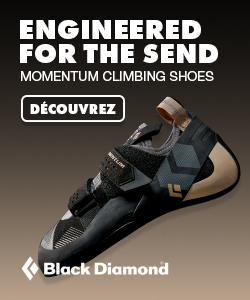12 Tips to a Successful Bouldering Strategy

If you’re doing things right, bouldering should involve a significant amount of falling. And by doing things right, I mean pushing yourself—physically and mentally—to solve the problem that stands before you. Along the way, you’re inherently going to face repeated body slams onto a crash pad or the gym floor … but that’s all part of the fun, anyway.
That being said, bouldering shouldn’t necessarily be about falling less, but rather giving yourself the tools you need to try harder, so that you can ultimately send more. That’s exactly why having a solid strategy for how you approach a boulder problem—whether it’s a V0 or a V12—can assist you in focusing on those physical and mental skills you need to improve as a boulderer.
Use these 12 tips to tackle any boulder problem
1. Before you even consider trying a problem, find the descent.
Have you ever found yourself at the top of a boulder, only to realize that your only options for getting back down involved a terrifying slabby down-climb or a leap of faith to a few crash pads on the ground? We call ourselves climbers, not descenders, so keep the aim focused on going up rather than having to deal with an even harder V-grade to get down.
2. Scope out the problem from a distance, to get a full understanding the climb.
It’s easy to be a kid in a candy shop, and see a jug and want to pull on it. But give yourself a few moments to assess the entire path of the problem; it will reveal the holds that are best suited for you, and help you understand the top-out sequence.
3. Check out the topout from above, or get the beta on what to expect.
Is the topout choss-ridden? Will you be dipping your hand into a puddle instead of a jug? Nothing is worse than figuring out what you thought was the crux, only to be flailing off of moss at the top. Figure out what stands between (well actually above) you and the send.








